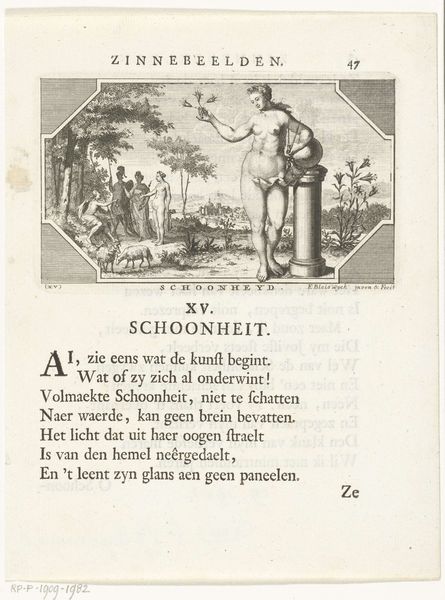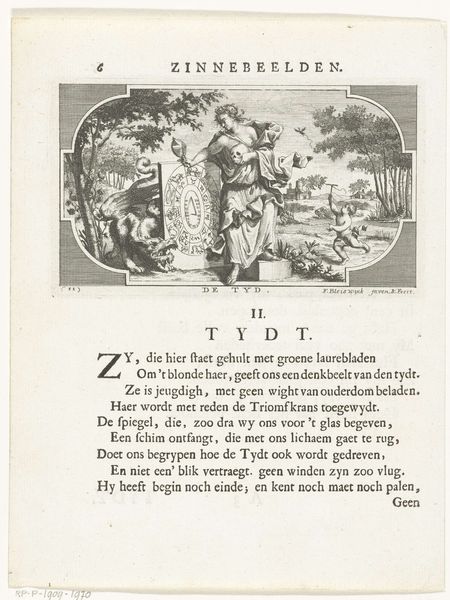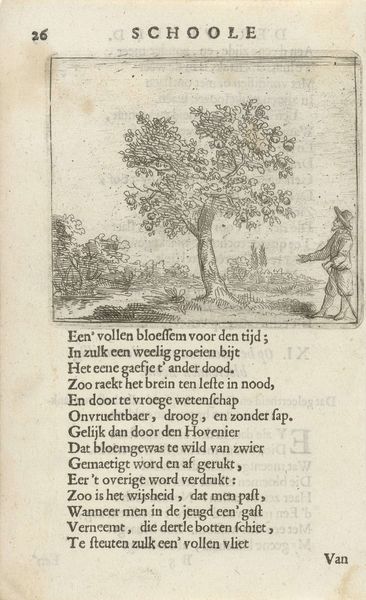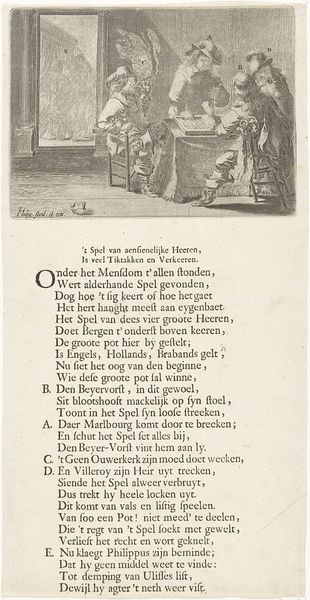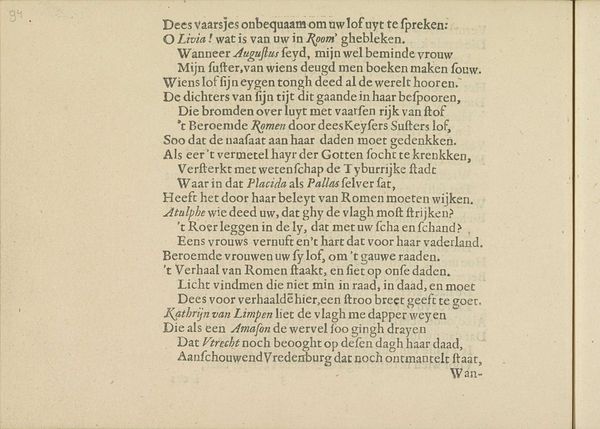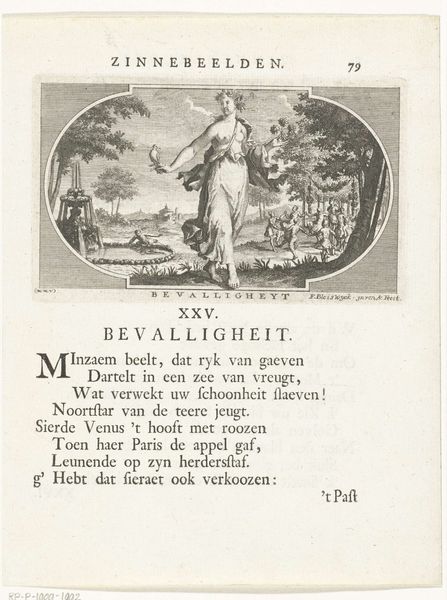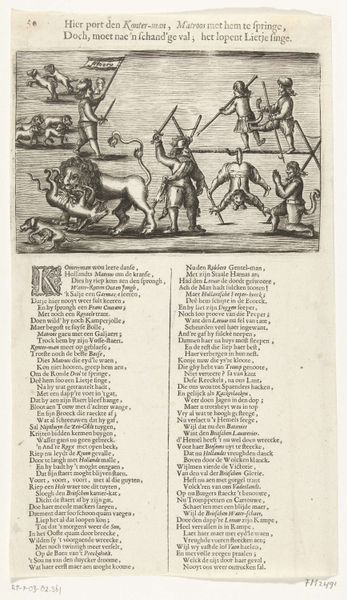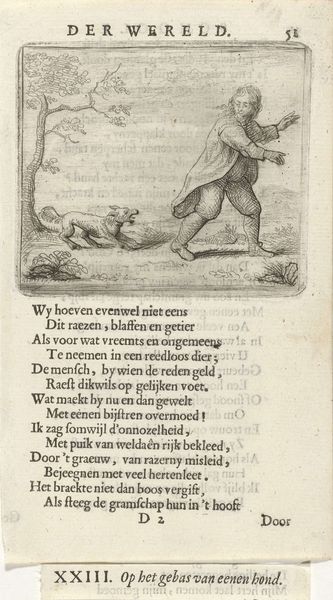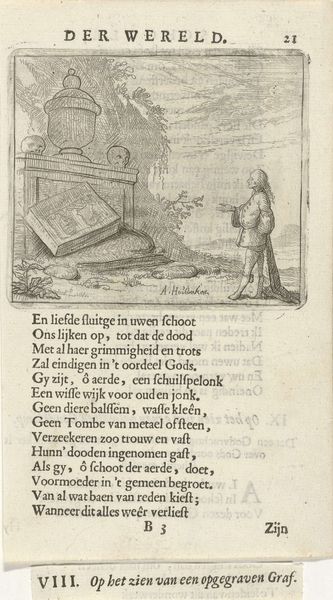
print, engraving
#
allegory
#
baroque
# print
#
old engraving style
#
landscape
#
figuration
#
history-painting
#
engraving
Dimensions: height 196 mm, width 150 mm, height 129 mm, width 76 mm
Copyright: Rijks Museum: Open Domain
Editor: Here we have François van Bleyswijck's "Embleem met allegorie op speelkunst," an engraving dating between 1681 and 1737. The scene feels so deliberately posed, but the juxtaposition of figures like Apollo and Pan strikes me as strange. How do you interpret this work, especially regarding the use of those figures? Curator: What catches my eye is how this print weaves together cultural memory using powerful visual symbols. Note how Apollo, god of music and harmony, stands central with his harp, a beacon of enlightenment. Yet, the wild, goat-legged Pan appears in the poem—what could that mean? Editor: Is it a kind of dialectic? Order versus chaos, reason versus passion? Curator: Precisely. This is Baroque allegory at work. See how the laurel wreath associates Apollo with triumph and intellect, part of a visual language understood by the educated elite. The inclusion of Pan, who lost the musical contest with Apollo, introduces a counterpoint, a reminder of the untamed and irrational forces art can also explore. This creates tension between superficial success (Pan being crowned) and intrinsic value. Notice the figures surrounding the image in nature–are they being soothed by music? Editor: I hadn’t thought about it that way, but it does make me wonder if this print isn't just about music, but about the broader power of art to civilize or to provoke. Curator: Yes, it asks us to consider how we, as audience, interpret and respond to these powerful symbols, which continue to resonate centuries later. Understanding this visual vocabulary gives us insights into the past and present.
Comments
No comments
Be the first to comment and join the conversation on the ultimate creative platform.
